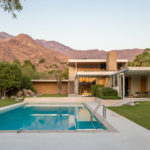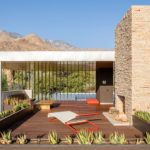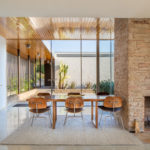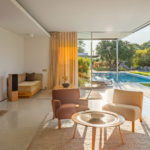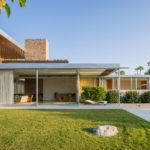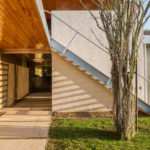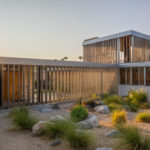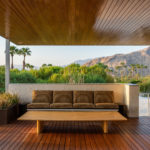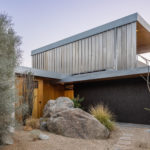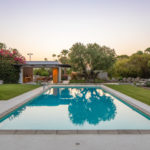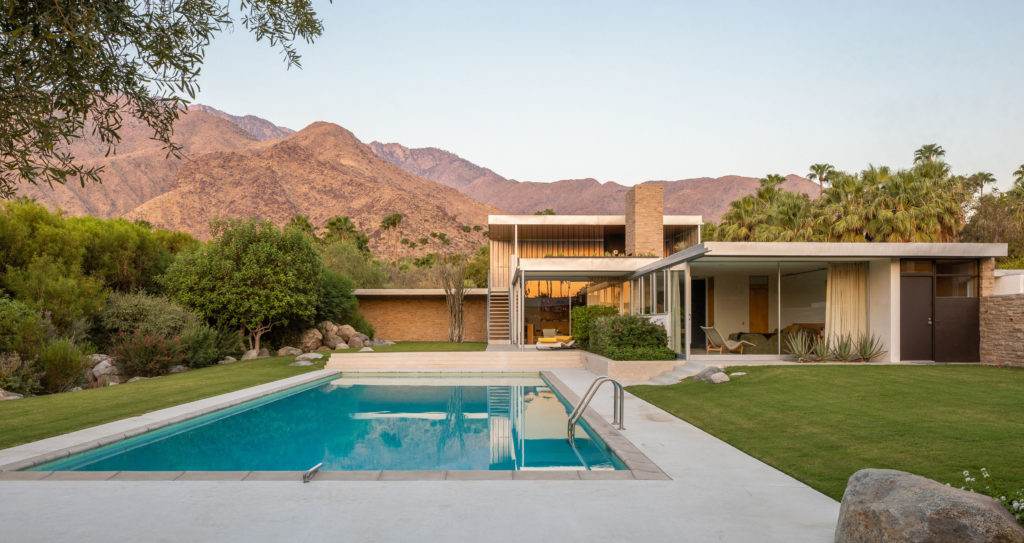Neutra’s Desert Masterpiece, $25M
Author:Philip Ferrato
There are houses, and then there are houses that completely alter the concept of living, and one man is responsible for having commissioned two of them.
That would be Edgar J. Kaufmann, the Pittsburgh department store magnate, who with his wife Liliane, commissioned Frank Lloyd Wright to create Fallingwater in 1936 and a decade later, sought out Richard Neutra to design the Desert House in Palm Springs. The Kaufmanns were not strangers to large-scale projects, having built an impressive, almost Expressionist brick Tudor as their primary residence near Pittsburgh; Kaufman was noted for his ability to choose outstanding architects and then stand back, allowing them work their magic. To give an idea of the scope of the original project, the budget for the Desert House was over $300,000 in 1946– over $4,000,000 in 2020 dollars.
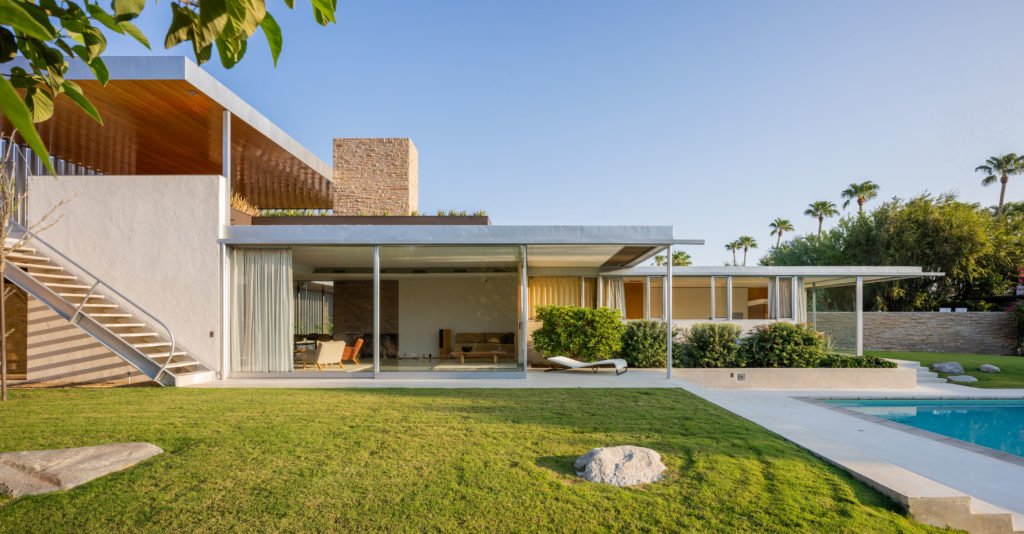
Neutra was an exceptionally clever architect, and faced with 1946’s post-wartime shortages and regulations, he dug the foundations just days before restrictions on new construction would have limited the project. Wartime shortages also limited new residential construction to one story (which may explain in part why we have so many “ranch” houses) a restriction that Neutra worked around by creating a shaded rooftop pavilion with views across what was (back then) open desert, enclosed in the same moveable aluminum louvers used to shield passages on the main level.
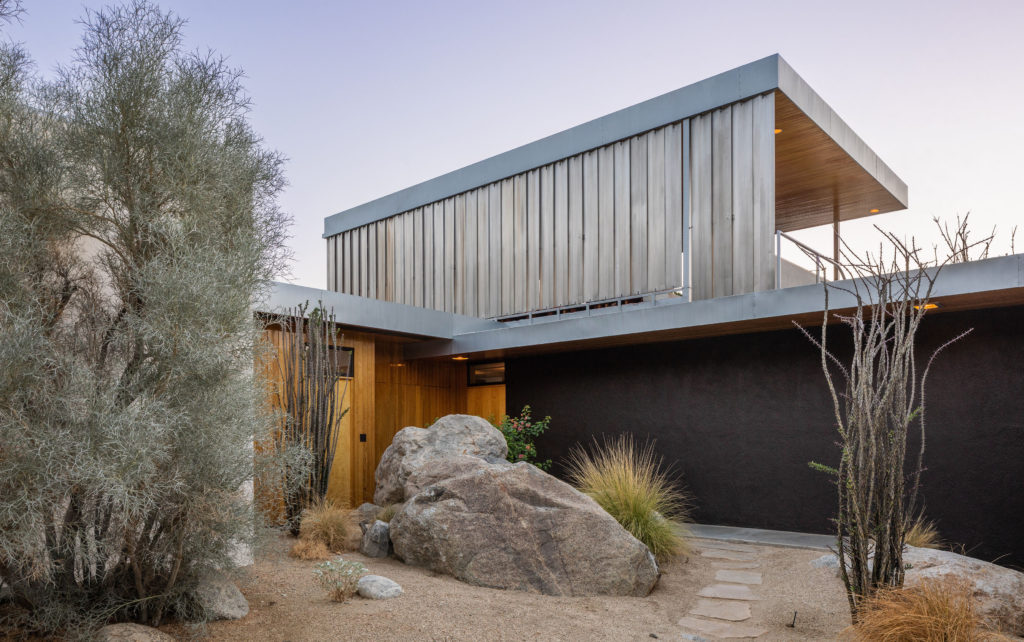
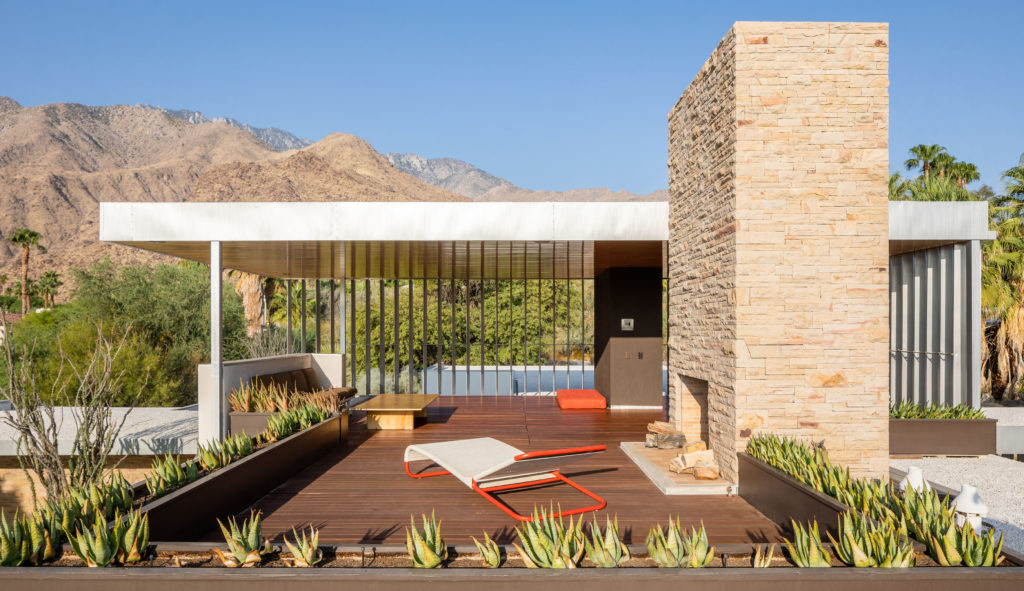
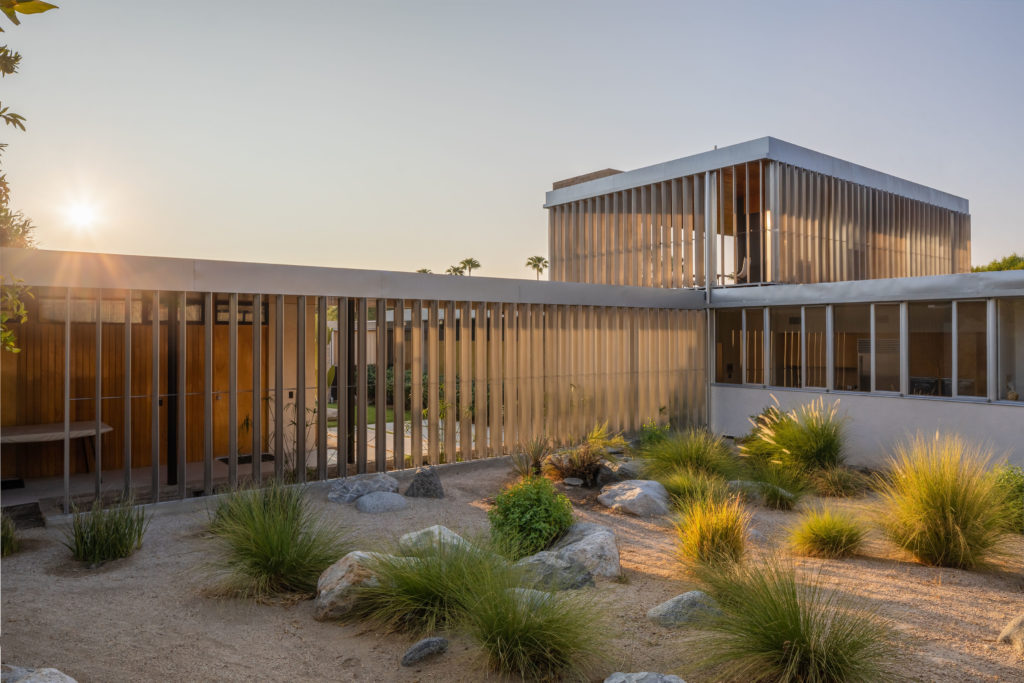
Unlike Fallingwater’s organic setting cantilevered over a stream, the Desert House was more like a machine in the desert, and would go on to be immortalized by photographers Julius Shulman and Slim Aarons in unforgettable images.
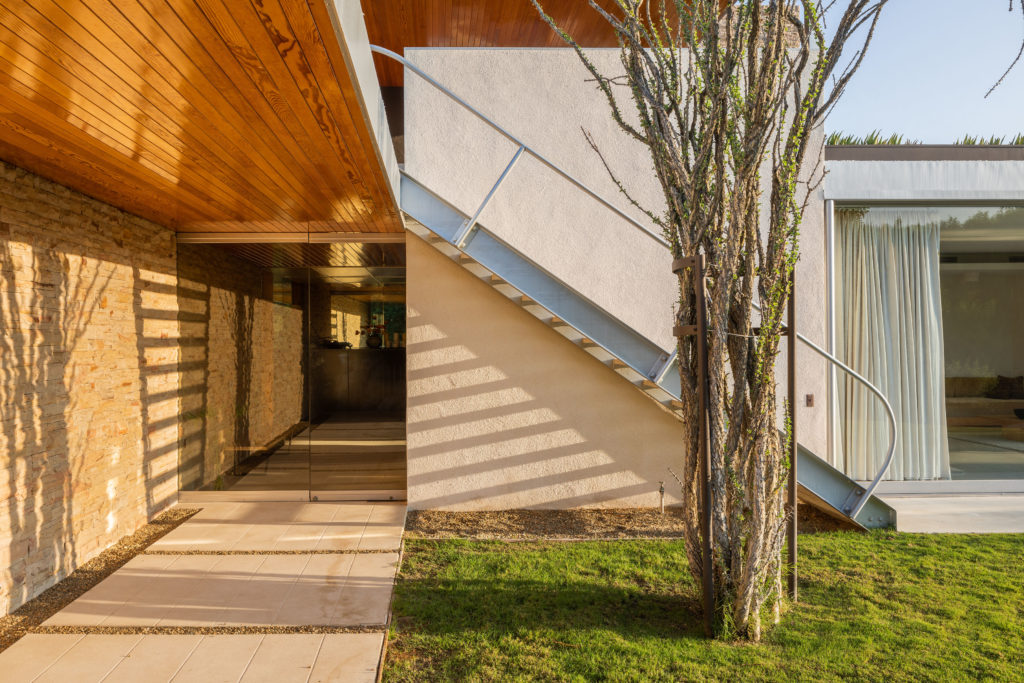
Kaufmann passed away in 1955; the house underwent a series of subsequent owners (including most famously, Barry Manilow) and many unsympathetic changes, including an increase of its square footage and numerous maladroit interior design choices.
Enter Brent Harris, an investment manager, and Beth Edwards Harris, an architectural historian, who purchased the property 1992 and undertook a five-year research and restoration project with Leo Marmol and Rod Radziner of Marmol Radziner. They reduced the square footage to the original dimensions and seamlessly installed new HVAC systems– since the house had originally been intended only for winter, there was no “original” air conditioning. They reopened the quarry in Utah that had provided the original stone, all of which had to be hand-shaped and set to duplicate the original. No surface was left unconsidered, and since one of Neutra’s original drawings and details had survived, the recreation of this house was an intellectually heroic, multi-million dollar undertaking.
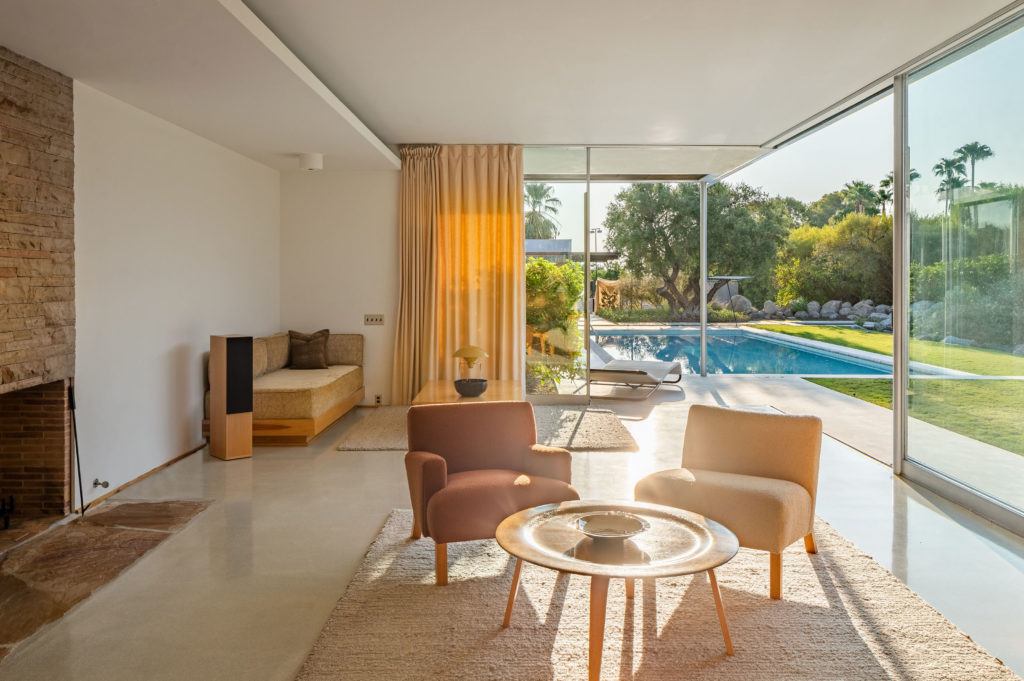
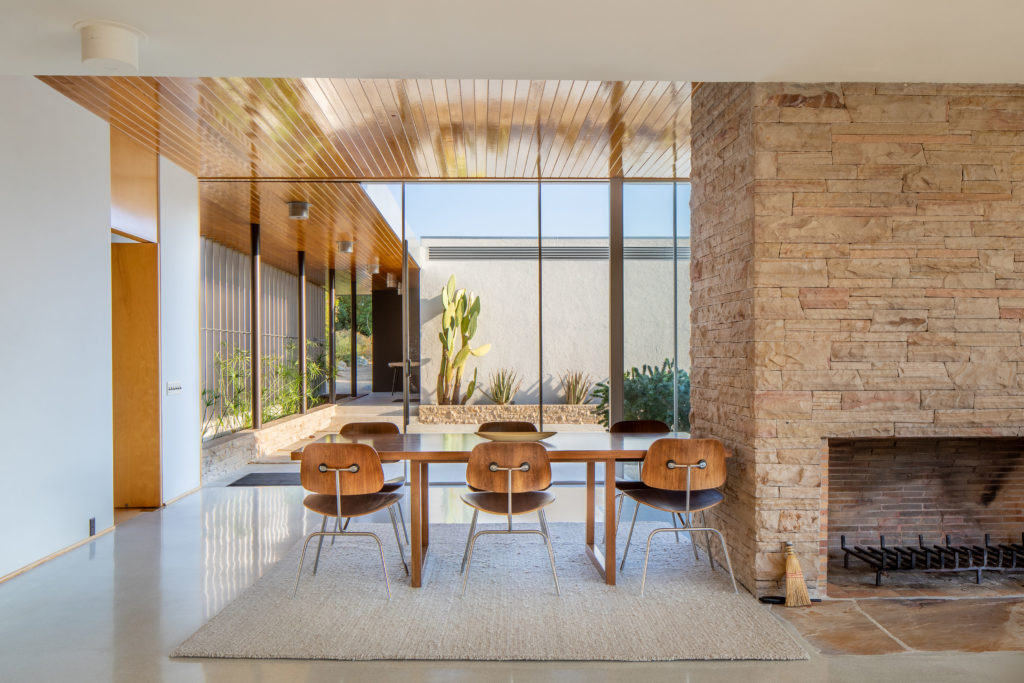
[For more about the history of the Kaufmann Desert House, there’s a very detailed reminiscence about the restoration; an appreciation of Edgar J. Kaufmann that puts his life in perspective, plus the very readable Five Things You Should About The Kaufmann Desert House.]
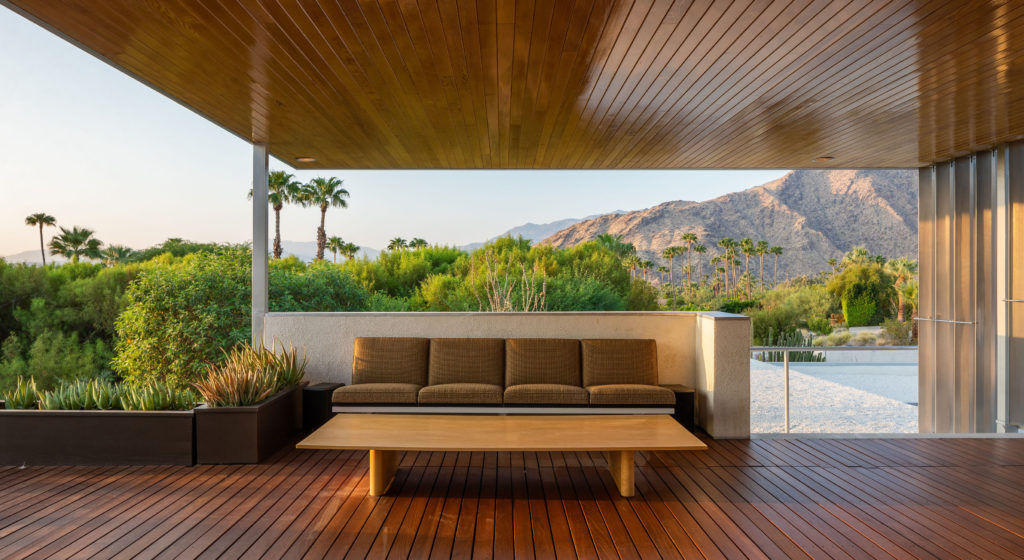
More: For additional details and a video, go to the listing. A rare opportunity to own one of Modernism’s icons, perfectly restored and maintained, represented by Gerard Bisignano at Vista Sotheby’s International Realty.
The pool house, below, was a later addition by Marmol Radziner, intended as an entertaining space/cabana as well as a pavilion from which to view Neutra’s masterwork.
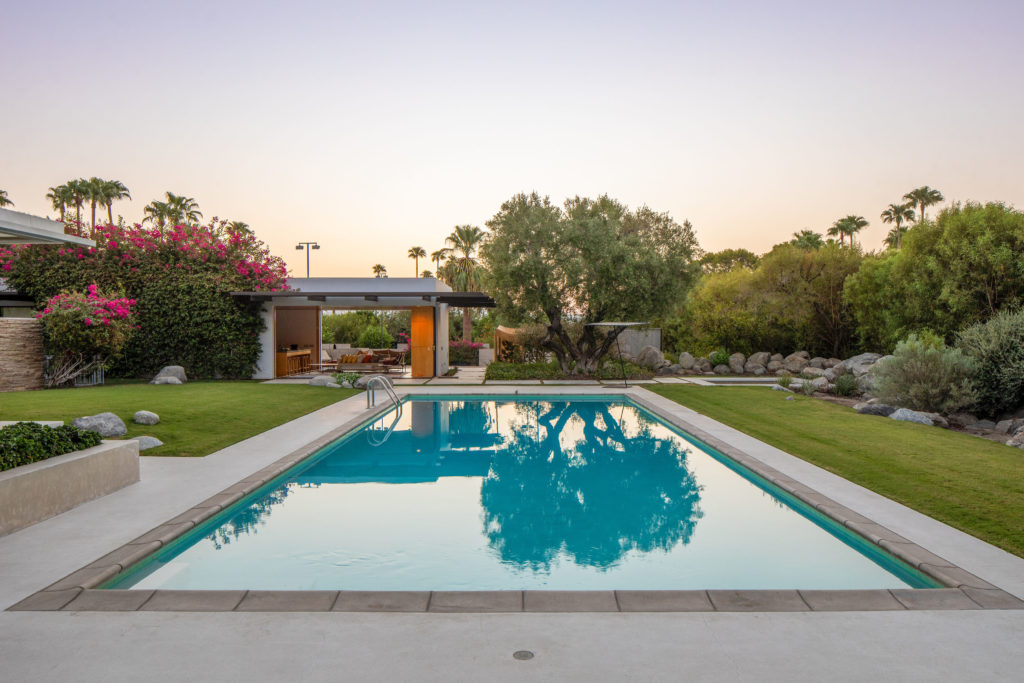
Photo Credit: Dan Solomon for Vista Sotheby’s International Realty
